The Science Behind the 3 Steps to Lean Legs Program

I designed my 3 Steps to Lean Legs Program to help you train the right muscle to get that lean and toned look without adding unwanted muscle bulk.
The key to improving fitness and getting the results you want from your workouts lies in understanding how your muscles work and how to train them.
So in this blog post, I’m going to share the science behind my program to help you understand how to get lean and toned without getting bulky.
UNDERSTANDING MUSCLE FIBERS
Anytime you work out, you’re exercising different muscle groups. Each exercise you do works out a different set of muscles, but did you know that there’s more to your muscular structure than those broad categories like abs, triceps, and quads?
These muscles are considered skeletal muscles—they’re attached to your bones and allow you to move and perform your regular daily activities. The groups themselves are made up of muscle fibers. It’s these fibers that can be a bit confusing to understand.
Every person has fast and slow-twitch muscle fibers. Each type gets triggered for different movements and allows you to perform those movements with more dexterity and finesse.
Depending on which muscle fibers you train more and how you train them, you can influence what kind of muscle you’re going to develop.
Some women prefer a more lean and toned look, the look that’s often seen in Pilates instructors. And other women prefer having a more muscular look, the look a lot of CrossFit instructors tend to have. However, keep in mind that what’s considered “lean” and “bulky” is quite subjective :)
Crossfit trainer vs Pilates instructor

Both looks are perfectly fine and whichever of those two looks you personally prefer, just know that you can achieve it with the right training!
And if you want to figure out what’s the best training for you, you should really understand what are fast-twitch and slow-twitch muscle fibers and how they work.
RELATED POST: Muscle Toning vs Bulking – What’s the Difference?
WHAT ARE FAST-TWITCH MUSCLE FIBERS?

Fast-twitch muscle fibers are fibers that use anaerobic respiration which means they don’t use as much oxygen as the other type of muscle fibers. When this type of muscle needs fuel, they usually get it from burning carbs since carbs don’t need a lot of oxygen to be converted to energy.
Fast-twitch muscle fibers are more adjusted to super intense activities. Think of activities that are more tiring and leave you gasping for breath.
This makes them ideal for fast movements like sprinting, jumping, and lifting weights (strength training). The fibers themselves are typically longer than slow-twitch fibers but they’re more likely to fatigue quickly.
Think about how sprinters perform. They run all out for short distances but are unable to keep up that speed indefinitely. This is because those movements rely on fast-twitch fibers. Once they get tired, they need to recover before the person can sprint again.
These are the primary fibers we target during HIIT routines with lots of explosive jumping and rapid movements. You can’t keep the pace up for an indefinite amount of time. You need to stop and rest to let your muscles (aka the fast-twitch muscle fibers) recover.
Moves that trigger those fast-twitch fibers will help create a more muscular (sometimes bulky) physique.
That’s why I don’t recommend lifting heavy weights nor doing a lot of HIIT if you prefer a more toned, leaner look.
If you train your fast-twitch muscle fibers very often and use heavy weights, this could, depending on your body type too, cause bulkiness.
Don’t get me wrong, if you want to stay healthy and have a nice muscle tone, you need to train both types of muscle fibers.
RELATED POST: HIIT vs LISS – Which Is Better for Fat Loss?
WHAT ARE SLOW-TWITCH MUSCLE FIBERS?

Slow-twitch muscle fibers are fibers that use aerobic respiration. This means they rely on more oxygen in your blood to get the fuel they need to function properly.
The slow-twitch fibers are ideal for aerobic exercises and movements rather than agility or speed-based activities. This is the type of exercise that relies more on fat for fuel than on carbs. This means that when you do activities that train these muscle fibers, your body actually burns fat.
So if your goal is fat loss, you should definitely include activities that train your slow twitch muscle fibers.
These are exercises that your body can do for long periods of time. This might look like jogging, hiking, power walking, swimming, and even riding your bike. These are the dominant muscle groups we tend to work out through steady-state cardio work.
Slow-twitch fibers support endurance and create a more lean and toned look.
RELATED POST: Fat Burning Zone – Learn How to Burn More Fat
IS ONE BETTER THAN THE OTHER?
One of the most common questions I get is whether someone should try to develop their slow-twitch or fast-twitch fibers more than the other. People want to know if one type is better.
The simple answer is, no. You need both types of muscle fibers if you want your body to be able to do the types of exercises that will help you slim down and tone up.
Everyone has a mixture of both types of muscle fibers. It’s part of what makes your skeletal muscles the way they are. But some people have more of one type of fiber than the other.
That doesn’t mean you’re weaker than another person or that you cannot achieve a certain look. This just means you need to tailor your exercises to your body’s unique needs and goals.
Remember, when it comes to fitness, there is no one-size-fits-all program. You have to try different things and see what works for you. It’s why my Lean Legs Program has different plans based on your body type. If everyone did the exact same thing over and over again, only a few people would see the types of results they want.
So, how can you tell which type of fibers you have? Well, the answer isn’t as simple as you might think.
HOW TO TELL WHICH TYPE OF MUSCLE FIBERS YOU HAVE?
The makeup of your body’s muscle fibers is largely based on genetics. It’s the same sort of thing that determines your body type. Some people are naturally tall and lean while others are shorter and put on muscle super easy.
That said, most people are born with a fairly even number of both fast and slow-twitch muscle fibers. Some people may be born with more of one kind of muscle fiber which is why they might be better at a certain sport or activity.
So if you naturally have more slow-twitch muscle fibers, you might be better at long-distance running, and if you naturally have more fast-twitch muscle fibers, you might be better at sprinting. However, this needs to be more researched.
If you train hard enough at one sport, you may “change” the muscle fibers in your body.
For example, if you’re a marathon runner and you train hard and long enough, some of your slow-twitch muscle fibers will grow longer, which gives you longer, leaner muscles. Similarly, if you lift weights or sprint a lot, your fast-twitch muscle fibers will grow bigger, causing you to get bigger, potentially bulkier muscles.
This explains why walking and long-distance running create a leaner, slimmer look, while HIIT, heavy weights and sprinting cause some people to bulk up.
That’s why my Program includes lots of steady state cardio, moderate amount of HIIT and bodyweight strength training.

Share this Image On Your Site
CAN YOU TRAIN FAST AND SLOW TWITCH MUSCLES?
The good news is that you can train both fast and slow-twitch muscles. Doing so helps improve your overall muscle tone and fitness level. That said, it is possible to overdo it. If you do, you risk overdeveloping certain muscles which can make it harder for you to get the look you want.
The key to success lies in targeting both your fast-twitch and slow-twitch muscle fibers with the right type of exercises. Here’s how to develop both sets of muscle fibers.
HOW TO TRAIN FAST-TWITCH MUSCLES IF YOU DON’T WANT TO BULK UP

If you prefer a leaner look and you bulk up easily, you should be careful with doing some exercises. Especially if your body type tends to bulk up easily.
If you want to avoid bulkiness then I don’t recommend sprinting, especially up hill. You should also stay away from heavyweights and CrossFit type of workouts. HIIT routines with a lot of squats, lunges and burpees are also not your friend.
I’d recommend focusing on bodyweight workouts because they train your fast-twitch muscles without causing bulkiness.
Doing full body workouts a couple of times per week with low weights, resistance band or just your bodyweight are a great option.
This is the type of workout I have in my Lean Legs Program and they really help you achieve that lean and toned look without adding muscle bulk.
To get a better idea of what kind of workouts you should do to get lean and tone, check out the FREE workout from my ebook :)
HOW TO TRAIN SLOW-TWITCH MUSCLES
Slow-twitch muscles are all about endurance, so it makes sense that these exercises will take a good bit longer than the ones targeting fast-twitch muscles. That doesn’t mean you can’t make them fun.
Walk on the treadmill while watching a movie or TV show that you’ve been meaning to catch up on. If the weather is nice, take several walks around the block or go for a long hike at least once a week.
The point is to go at a steady pace until you’re tired, but not exhausted. Remember, exercising slow-twitch muscles is a great way to get a steady calorie burn and improve your cardio fitness
This type of workouts won’t add bulkiness and they are great for fat loss. So if you want to reduce body fat and get leaner, low to moderate intensity cardio is the way the go.
And this is exactly the type of cardio I have in my Program. :)
NOT SURE WHERE TO START?
If you want to get fit, stay healthy and have a well-balanced fitness routine, you should definitely train both slow-twitch and fast-twitch muscle fibers. You can’t have one without the other and the best way to approach your workouts is through balanced training of both fibers.
If you’re not sure where to start, I would highly recommend giving my Program a go.
It’s a full body program designed to help you get lean and toned without getting bulky. It will help you lose extra body fat and tone up your legs, core and arms.
So if getting slim and toned is one of your goals and you struggle to get that look, my Program would be perfect for you!
Check out these lovely ladies who followed my Program and got amazing results :)
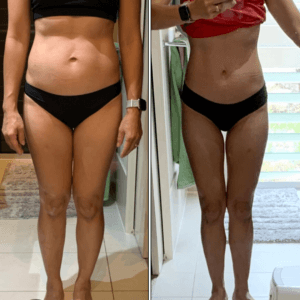
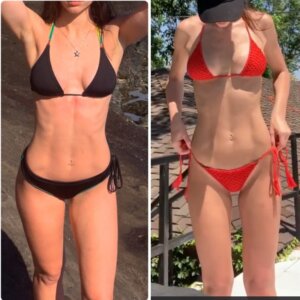
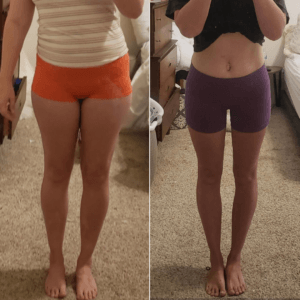
Love Rachael xx
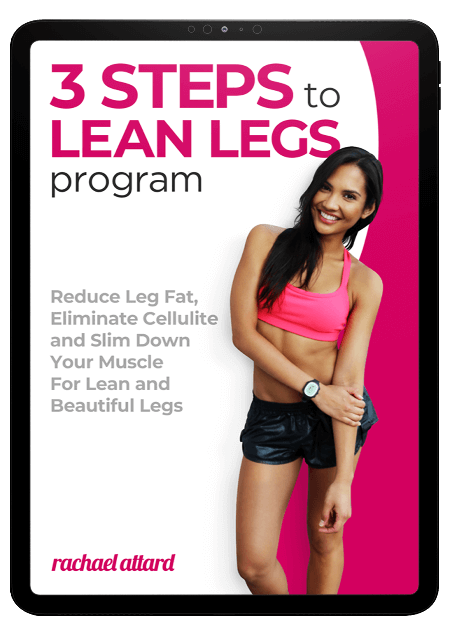






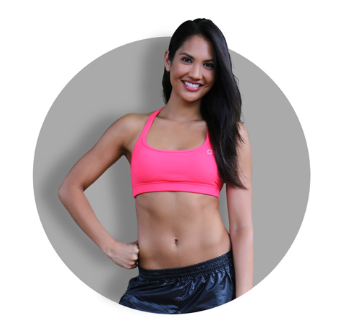
Thank you Ana,how can I reduce the fat in my glutes then cause I’m having challenges keeping up with cardio at home,thanks the free ebooks is doing a great job with my upper body-i just don’t want to be too bootilicious
Hi lovely,
To be honest, from Rachael’s experience, power walking is the most effective cardio when it comes to slimming down not just your legs but also other areas in your body so I suggest that you try power walking 5-6x a week and aim for at least 10,000 steps a day. Make sure to do it on a flat surface and you can also add some light resistance workouts to tone up. It is also important to adjust your diet for weight loss to help you achieve your goal. I have a very detailed blog post that will help you learn how to slim down your legs so please go give it a read. :)
If you have more questions, you can email us at info@rachaelattard.com
Love,
Len
Interesting rachael! Really,as a science student I’ve been wondering how loosing fat and toning works. Great info,it’s so easy to comprehend just like your other blogs(I can’t stop following you!) Team rachael,pls about the booty exercises in your free ebooks(which I’m into cause I can’t afford the program yet),donkey kicks and clams,will it just tone or make it bigger as well? Mesomorph,19 y/o. Thank you so much!
Hey lovely,
Thanks for reaching out! :)
I am so glad that you’re finding the blog posts helpful! :)
It will help you tone your booty, and as your glute advances, it will become perkier and bigger. :)
Here is the link to a couple of blog posts related to this subject that you may find interesting. :) xx
Love,
Ana